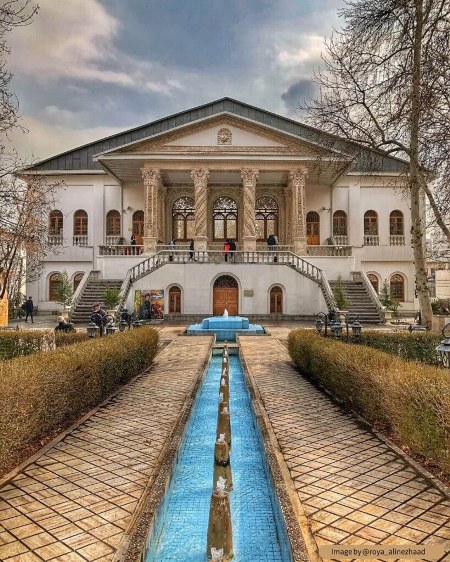
Ferdows garden
Ferdows Garden is a historical complex located in the district of Tajrish in Shemiran (northern Tehran), Iran.
The complex dates back to the reign of the Qajar dynasty, and includes a mansion which houses the Cinema Museum of Iran since 2009.
History
The origin of complex dates back to the reign of Mohammad Shah (1808–1848) of the Qajar dynasty, who ordered the construction of a mansion named Mohammadie in Tajrish. He died in September 1848, and the unfinished structure was subsequently disused.
Later on, Hossein Ali Khan (Mo'ayyer-ol-Mamalek), a courtier close to Mohammad Shah, followed up the construction of a two-floor Qajar-style mansion within the same area. During the reign of Naser ed-Din Shah (1848–1896), the ownership of the enclosure was transferred to Dust-Ali Khan (Nezam od Dowle), the son of Hossein Ali Khan. He refurbished the complex and renamed it Ferdows. Afterwards, Dust-Mohammad Khan, the son of Dust-Ali Khan and the son-in-law of Naser ed Din Shah, built a new mansion to the south of the enclosure. He used the workmanship of architects from Isfahan and Yazd, and named it Rašk-e Behešt, meaning "the Envy of Heaven".
Mohammad-Vali Khan, Sepahsalar-e Tonekaboni
The complex changed several hands, and the older mansion was eventually destroyed. The remaining structure was then bought by Mohammad-Vali Khan Tonekaboni, who was the leader of the Constitutionalist Revolutionary Forces from Iran's northern regions of Gilan and Mazandaran. He added new pools and fountains to the complex, and regenerated the aqueduct that, in earlier years, had fed the garden with fresh water. The current gate of the garden also dates from this time.
The complex was leased to various ministries over years. In 1937, the Ministry of Education housed the primary and secondary school of Shapur in this compound. After the 1979 Revolution, until 2002, Ferdows Garden served as a training center for filmmaking. Since 2002, it houses the Cinema Museum.



